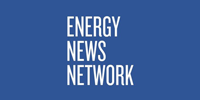
Siemens Gamesa Renewable Energy (SGRE) has begun the operation of an electric thermal energy storage system (ETES) in Hamburg-Altenwerder, Germany.
The technology makes it possible to store large quantities of energy cost-effectively and thus decouple electricity generation and use, explains SGRE, which calls the system a “world first.”
The heat storage facility, which was ceremonially opened on Wednesday, contains around 1,000 metric tons of volcanic rock as an energy storage medium. It is fed with electrical energy converted into hot air by means of a resistance heater and a blower that heats the rock to 750 degrees C. When demand peaks, the ETES uses a steam turbine for the re-electrification of the stored energy.
The ETES pilot plant can store up to 130 MWh of thermal energy for a week. In addition, the storage capacity of the system remains constant throughout the charging cycles.
For the next step, Siemens Gamesa plans to use the technology in commercial projects and scale up the storage capacity and power. The goal is to store energy in the range of several gigawatt-hours in the near future.
“With the commissioning of our ETES pilot plant, we have reached an important milestone on the way to introducing high-performance energy storage systems,” says Markus Tacke, CEO of SGRE. “Our technology makes it possible to store electricity for many thousands of households at low cost. We are thus presenting an elementary building block for the further expansion of renewable energy and the success of the energy transition.”
The Institute for Engineering Thermodynamics at Hamburg University of Technology and local utility company Hamburg Energie are partners in the innovative Future Energy Solutions project, which is funded by the German Federal Ministry of Economics and Energy within the “6. Energieforschungsprogramm” research program. TU Hamburg carries out research into the thermodynamic fundamentals of the solid bulk technology used.
read more











